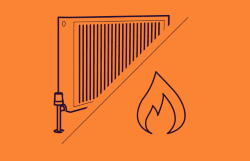In the intricate world of energy brokerage, ensuring smooth transactions and satisfactory service for your clients is paramount. However, disputes with suppliers can arise, and when they do, having a clear roadmap for resolution is essential.
One powerful tool in this process is the Energy Ombudsman, an impartial entity that can step in to address grievances. In this comprehensive guide tailored for energy brokers, we’ll delve into the nuances of how to effectively complain to the Energy Ombudsman on behalf of your energy customers, ensuring a fair and expedient resolution.
Navigating the Energy Landscape as a Broker
Energy brokers play a pivotal role in facilitating transactions between businesses and energy suppliers. As intermediaries, us brokers aim to secure the best energy deals for clients while ensuring smooth operations.
However, when disputes arise between the energy supplier and the client, it’s crucial for brokers to understand the process of leveraging the Energy Ombudsman to resolve issues.
Understanding the Grounds for Complaint
Before initiating a complaint, it’s vital to understand the specific grounds for the dispute. Common issues include:
- Billing discrepancies
- Service interruptions
- Disagreements over contractual terms
Identifying the nature of the problem sets the stage for a targeted and effective resolution process. The Energy Ombudsmans official website states their areas of expertise are:
- Smart meters: not sending readings
- Smart meters: MTC timeswitch code inaccuracies
- Billing
- Back billing
- Switching
- Debt and payment
Using Internal Channels
Before involving the Energy Ombudsman, it’s advisable to attempt resolution directly with the energy company.
Engage in open communication, clearly articulate the issue, and provide any necessary documentation to support your case. Many disputes can be resolved through direct dialogue, streamlining the process for all parties involved.
Verify that your energy customer meets the eligibility criteria for seeking resolution through the Energy Ombudsman.
Typically, this includes having a non-domestic energy contract. Ensure your client’s status aligns with the Ombudsman’s guidelines to avoid any procedural roadblocks.
Collect all relevant materials, including communication records with the energy supplier, copies of contracts, bills, and any other evidence supporting the case. The more comprehensive and clear the documentation, the stronger the position when presenting the complaint.
What does the complaints procedure look like?
Contacting the Energy Ombudsman
Once internal channels have been exhausted, and the eligibility criteria are met, it’s time to turn to the Energy Ombudsman.
Visit the Ombudsman’s website and navigate to the business complaints section. Follow the instructions provided for submitting a complaint on behalf of your energy customer.
You can also call on 0330 440 1624, write to enquiry@energyombudsman.org or Energy Ombudsman, P.O. Box 966, Warrington WA4 9DF or use their website form to make an enquiry.
Providing Detailed Information
Complete the complaint form with meticulous detail.
Include specifics such as account details, relevant dates, and a clear and concise description of the problem. Attach the gathered documentation to substantiate the complaint.
Clear, accurate, and detailed information enhances the Ombudsman’s ability to assess the case effectively.
Submission and Follow-Up
Submit the complaint to the Energy Ombudsman, providing accurate contact details for follow-up communication.
Upon receiving all necessary information, the Energy Ombudsman will commence the investigation process, assuming your complaint hasn’t been resolved with your gas and/or electricity provider. The typical duration for this process is around six weeks, although complexities in your case may extend this timeframe.
The Energy Ombudsman has outlined specific reasons why it may be unable to investigate a complaint:
- If the consumer hasn’t given their supplier 8 weeks to resolve the dispute since the date they first complained (or they haven’t got a deadlock letter).
- If the customer has already agreed to a resolution with their supplier.
- If the person has gone to court with their problem.
- If the consumer hasn’t brought the dispute to the Ombudsman within 12 months of receiving a deadlock letter.
- If the person has never been a customer with the supplier, or is complaining about something not covered by the scheme
- If the Ombudsman considers the complaint to be frivolous or vexatious.
- If the complaint is already being dealt with by another resolution service.
- If dealing with the complaint, or a complaint of its type, would seriously impair the operation of the Ombudsman.
After the complaint is submitted, the Energy Ombudsman will conduct an investigation.
The Ombudsman’s decision, based on a thorough examination of the case, will be communicated to all relevant parties. Brokers should review the decision and, if necessary, communicate the outcome to their energy customer.
If the Energy Ombudsman recommends specific resolutions, brokers should collaborate with their energy customer and the energy supplier to implement these solutions.
Timely and effective implementation ensures that the issue is fully resolved to the satisfaction of all parties involved.
If you’ve gone through the entire complaints process with the Energy Ombudsman and want to escalate the claim, you may want to explore the following options:
- Legal Advice: Consider seeking legal advice to determine if there are grounds for legal action. Consulting with a solicitor or legal advisor can help you understand whether there are legal avenues available to pursue your complaint.
- Alternative Dispute Resolution (ADR): In some cases, there might be alternative dispute resolution mechanisms available. Check if there are any other ADR schemes that may be relevant to your situation. The Energy Ombudsman is just one of the ADR providers in the energy sector.
- Regulatory Bodies: You may contact regulatory bodies such as Ofgem (Office of Gas and Electricity Markets) in the UK. While they may not handle individual consumer complaints, they regulate the energy industry and may be interested in systemic issues.
- Citizens Advice: Seek advice from Citizens Advice or a similar consumer advice organization. They may be able to provide guidance on your options and advocate on your behalf.
It’s crucial to keep in mind that legal processes can be complex and may involve costs. Before pursuing legal action, carefully consider the potential benefits and risks, including the financial implications.
Common Energy Complaints with Energy Suppliers
The Broader Implications: Proposed Changes for Small Businesses
As an energy broker, it’s crucial to stay abreast of industry developments that may impact your clients. Currently, there’s a proposal to amend the Gas and Electricity Regulated Providers (Redress Scheme) Order 2008, aiming to expand access to redress specifically for small businesses.
This proposed change underscores the ongoing efforts to make dispute resolution services more inclusive.
Currently, only businesses meeting the criteria of a relevant consumer, termed microbusinesses by Ofgem, with a non-domestic energy contract can access the Energy Ombudsman for dispute resolution assistance with their energy supplier. The Ofgem review highlighted that more businesses would benefit from this service.
While legal action through the courts is an option, many businesses, especially small ones, lack the necessary resources. The Legal Services Board Survey 2021 revealed that half of small businesses either sought to resolve their legal issues independently or took no action at all.
The consultation proposes:
- Introducing a new small business definition into the 2008 Order.
- Expanding access to redress for businesses with up to 50 employees and:
- An annual turnover of £6.5 million.
- A balance sheet total of £5 million.
- An annual electricity consumption of 500,000 kWh OR an annual gas consumption of 500,000 kWh.
Including small businesses in the threshold for seeking redress through the Energy Ombudsman would encompass an additional 4% of the UK business population, combined with microbusinesses. This would increase the total percentage of businesses eligible for redress to 99%, representing at least an additional 200,000 businesses in the UK.
Navigating the Consultation Process
The proposed changes are open for consultation, presenting an opportunity for energy brokers to contribute valuable insights.
Active participation in the consultation process ensures that any expansion is sensible, the language used is clear, and the thresholds are appropriately set. Brokers should leverage their industry expertise to provide feedback that reflects the practical needs of businesses.
While the consultation is open to everyone, energy brokers, energy suppliers, consumer groups, industry bodies, business organization representatives, and think tanks are particularly encouraged to participate. The collective engagement of key stakeholders ensures a well-rounded and informed decision-making process, reflecting the diverse perspectives within the energy sector.




